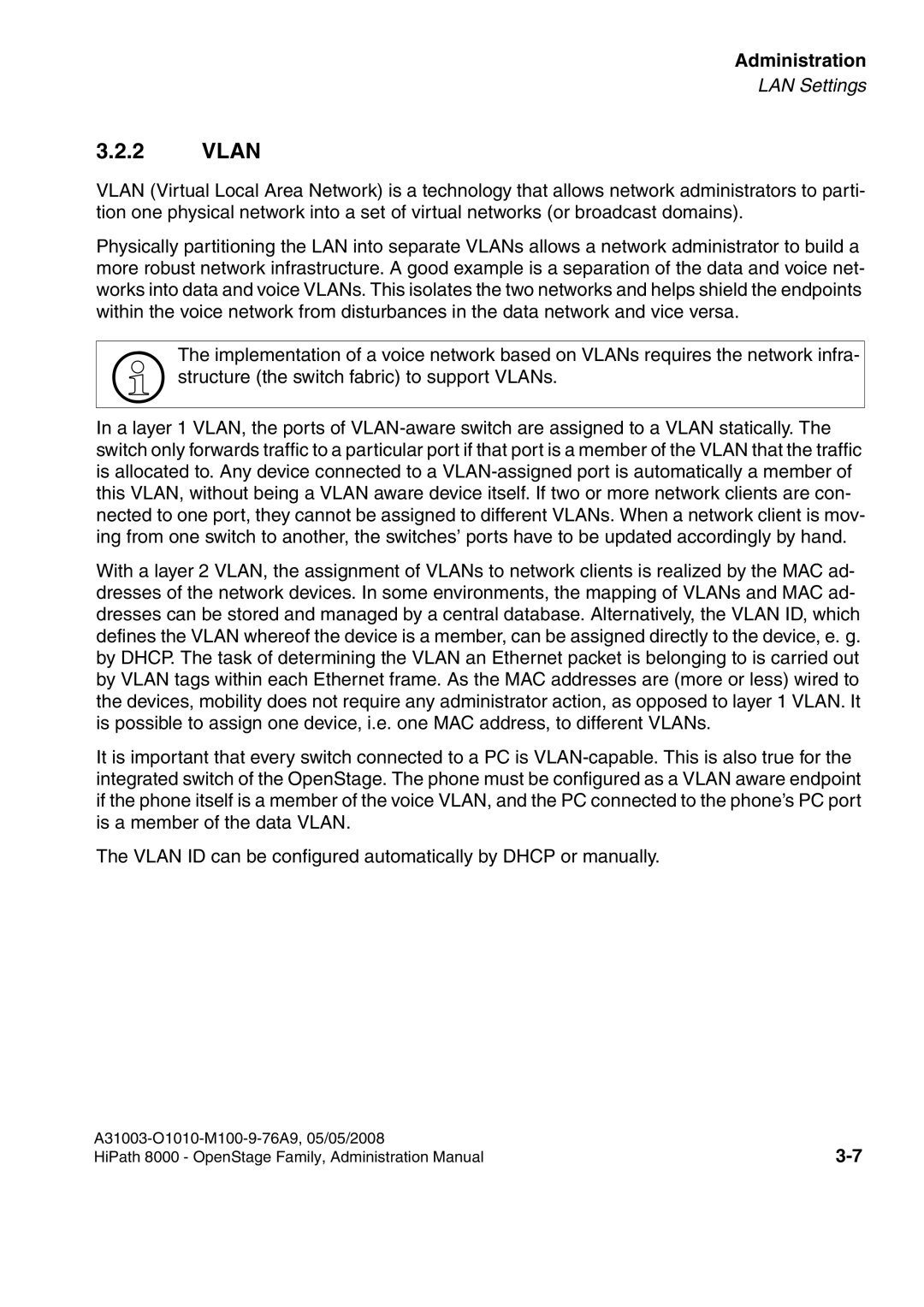
Administration
LAN Settings
3.2.2VLAN
VLAN (Virtual Local Area Network) is a technology that allows network administrators to parti- tion one physical network into a set of virtual networks (or broadcast domains).
Physically partitioning the LAN into separate VLANs allows a network administrator to build a more robust network infrastructure. A good example is a separation of the data and voice net- works into data and voice VLANs. This isolates the two networks and helps shield the endpoints within the voice network from disturbances in the data network and vice versa.
The implementation of a voice network based on VLANs requires the network infra- >structure (the switch fabric) to support VLANs.
In a layer 1 VLAN, the ports of
With a layer 2 VLAN, the assignment of VLANs to network clients is realized by the MAC ad- dresses of the network devices. In some environments, the mapping of VLANs and MAC ad- dresses can be stored and managed by a central database. Alternatively, the VLAN ID, which defines the VLAN whereof the device is a member, can be assigned directly to the device, e. g. by DHCP. The task of determining the VLAN an Ethernet packet is belonging to is carried out by VLAN tags within each Ethernet frame. As the MAC addresses are (more or less) wired to the devices, mobility does not require any administrator action, as opposed to layer 1 VLAN. It is possible to assign one device, i.e. one MAC address, to different VLANs.
It is important that every switch connected to a PC is
The VLAN ID can be configured automatically by DHCP or manually.
HiPath 8000 - OpenStage Family, Administration Manual |
